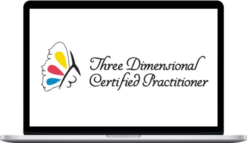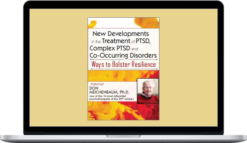Diane Poole Heller – When Unresolved Attachment Trauma Is the Problem
$180.00 $34.00
Total Sold: 1
»Instant Delivery
Description
Diane Poole Heller – When Unresolved Attachment Trauma Is the Problem
Description Of When Unresolved Attachment Trauma Is the Problem
Many clients bring to therapy the remnants of attachment wounds experienced before they learned to speak, so talk therapy is often ineffective at getting to the root of early memories that can continue to roil emotions and disturb relationships. This workshop presents a unique approach to correcting insecure attachment through specific corrective experiences that address the emotional injuries they incurred in early life. Through experiential exercises and videos of client sessions, you’ll see the profound effect of DARe (Dynamic Attachment Re-Patterning Experience) work in action. You’ll focus on how to:
- Identify three different styles of troubled attachment with special emphasis on the avoidant and disorganized styles
- Recognize why some clients begin to dissociate once they’ve formed a positive attachment with the therapist and why empathy can backfire
- Enhance your skills for creating a safe haven and secure attachment bond by becoming more sensitive to clients’ nonverbal, relational, and somatic cues
- Increase your capacity for intersubjectivity and incorporating well-timed humor and playfulness in your style
What you’ll learn in When Unresolved Attachment Trauma Is the Problem
Outline
- Therapeutic Presence
- a. Advantages
- b. Disadvantages
- The Role of family in Attachment Style Development
- Styles of Attachment
- a. Secure
- b. Avoidant
- c. Ambivalent
- d. Disorganized
- Defining Secure Attachment
- a. Tone of Voice
- b. Safety
- c. Protection
- d. Humor
- e. Relaxation
- f. Self-Regulation
- Secure Attachment Strategies
- a. Repairing Mis-attunements
- b. Repair Rituals
- c. Secure Priming
- d. Synaptic Sculpting
- e. Kind Eyes Exercise
- f. Affect Modulation
- g. Regulating the Nervous System
- h. Reversing the Freeze Response
- i. Somatic Strategies (D.A.R.e.)
- Neuroscience & Neuroplasticity
- a. The science of what helps us connect
- b. The Fluidity of Memory
- c. Impact of Abuse on the brain
- Being sensitive to client cues
- a. Nonverbal cues
- b. Relational cues
- c. Somatic cues
- Sadistic Abuse
- Trauma Resolution
- Video Vignettes of Complex Trauma Treatment
Objectives
- Focus on how to identify three different styles of troubled attachment with special emphasis on the avoidant and disorganized styles
- Focus on how to recognize why some clients begin to dissociate once they’ve formed a positive attachment with the therapist and why empathy can backfire
- Focus on how to enhance your skills for creating a safe haven and secure attachment bond by becoming more sensitive to clients’ nonverbal, relational, and somatic cues
- Focus on how to increase your capacity for intersubjectivity and incorporating well-timed humor and playfulness in your style
About The Instuctor
Diane Poole Heller, Ph.D.: At a time when psychotherapists trained primarily in the “talking cure” are increasingly recognizing the need to “read” clients’ nonverbal communications, particularly those buried in early attachment issues, Diane Poole Heller has been a leader in addressing the unconscious issues that clients are often unable to express. With an approach grounded in Attachment Theory, Peter Levine’s Somatic Experiencing method of trauma resolution, and spiritual healing techniques, she’s traveled around the world teaching integrative mind-body methods that deepen the resonance of the therapist–client bond.
More courses from the same author: Diane Poole Heller
Delivery Policy
When will I receive my course?
You will receive a link to download your course immediately or within 1 to 21 days. It depends on the product you buy, so please read the short description of the product carefully before making a purchase.
How is my course delivered?
We share courses through Google Drive, so once your order is complete, you'll receive an invitation to view the course in your email.
To avoid any delay in delivery, please provide a Google mail and enter your email address correctly in the Checkout Page.
In case you submit a wrong email address, please contact us to resend the course to the correct email.
How do I check status of my order?
Please log in to HealingCourse account then go to Order Page. You will find all your orders includes number, date, status and total price.
If the status is Processing: Your course is being uploaded. Please be patient and wait for us to complete your order. If your order has multiple courses and one of them has not been updated with the download link, the status of the order is also Processing.
If the status is Completed: Your course is ready for immediate download. Click "VIEW" to view details and download the course.
Where can I find my course?
Once your order is complete, a link to download the course will automatically be sent to your email.
You can also get the download link by logging into your HealingCourse account then going to Downloads Page.
Related products
Total sold: 2
Total sold: 7










